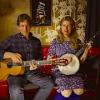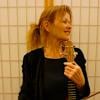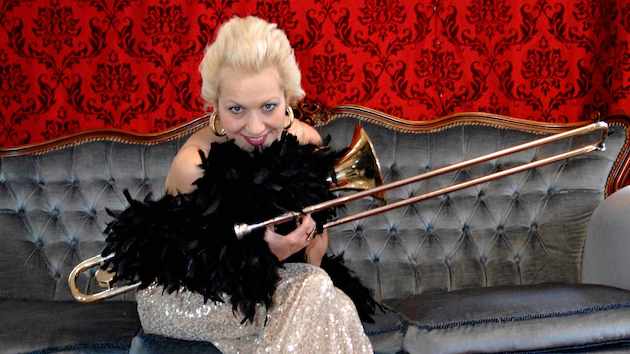
The biggest international jazz star living in the Bay Area hasn’t performed at the SFJAZZ Center or Yoshi’s. She’s yet to be covered in local papers and magazines, despite a capacious skill set, vivacious persona, and a plethora of YouTube videos racking up millions of views. So it’s high time to meet Gunhild Carling, the Swedish multi-instrumentalist, vocalist, bandleader and indefatigable entertainer who settled in Cupertino with her husband and two kids in January 2019.
One reason she hasn’t gained more traction here is that Carling is a devotee of what’s often called trad jazz, a stylistic umbrella that covers several overlapping pre-swing era idioms marked by polyphony, group improvisation, and syncopation more pronounced than in swing and modern jazz. It’s a repertoire and sound with wide populist potential, but little active audience in the Bay Area these days (unlike New York City, where there are several full-time bands steeped in similar territory).
A commanding trumpeter, excellent trombonist, and capable drummer and pianist, Carling is a disciple of Louis Armstrong, while also drawing deep inspiration from the more delicate and introverted approach of Bix Beiderbecke. But she’s not beholden to the 1920s. She’s also well versed in Ellingtonia and the lithe swing of the first great Count Basie Orchestra. As a vocalist, she’s in thrall to Billie Holiday, and she’s quick to stake a claim to the entire jazz continuum.
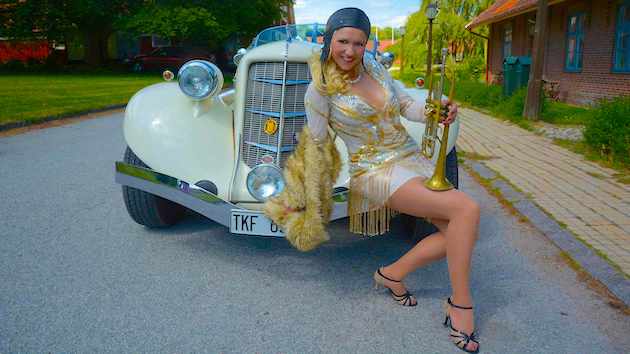
“All jazz interests me, and everything in jazz interests me. All the time I look at the masters. The sound of the old recordings is something that is really magic. Something about the microphones they used, or the way they recorded all together in the studio really speaks to me,” Carling said on a recent phone call from Hawaii, where she was in the midst of a sold-out run at the Blue Note in Honolulu. She livestreams from Oakland’s Piedmont Piano Company 5 p.m. Thursday, Jan. 7.
Another reason Carling hasn’t gained more notoriety in the Bay Area is that for the first 14 months she was hardly here. No sooner than settling in the South Bay, she was off touring around the world with her own band or as a featured performer with Postmodern Jukebox, belting out trad jazz versions of pop hits like Pharrell Williams’s “Happy,” Rick Astley’s “Never Gonna Give You Up,” and Madonna’s “Material Girl” (which feels particularly apt in the 1920s setting).
Grounded by the pandemic, Carling has made the most of her new home, livestreaming shows from her yard every Sunday. The fact that her husband, Johan Blomé, is an audio engineer and expert in video production (his job brought them to Silicon Valley) gave her a leg up when it came to virtual performances. She’s often joined by her 15-year-old daughter Idun on clarinet and vocals and 13-year-old son Viggo on drums, along with sundry friends and neighboring musicians.
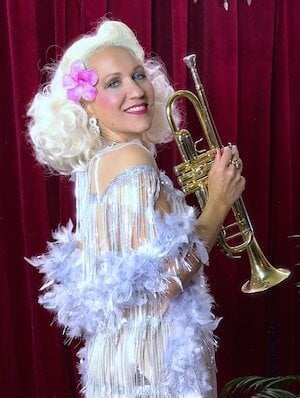
“We livestreamed the same week as the lockdown,” she said. “I was prepared. It happened once before in Sweden. I was pregnant and needed to cancel a lot of gigs. So instead of traveling all over the world, we invited the world to my living room. We started to do Sunday concerts and played about 100 over two years.”
One of the first Bay Area musicians she connected with was drummer Pete Devine, best known these days as co-leader of the popular roots-blues combo HowellDevine. But he first gained notice back in the 1990s with Bo Grumpus, a band with an early 20th-century repertoire of rags, blues, and long forgotten pop tunes. He was also the original drummer in Lavay Smith’s Red Hot Skillet Lickers, and it was that band’s manager who recommended Devine to Carling. He’s driven down for many of her Sunday livestreams, and has been duly impressed by her as an artist and performer.
“She’s amazing,” Devine said. “She has command of her instruments, a brilliant trumpeter and great trombonist. She’s very captivating and steeped in trad, but she’s very contemporary too. Not a recreationist. She appeals to younger people, and reminds me of the glamorous movie star types from the 1930s. She’s a show person through and through.”
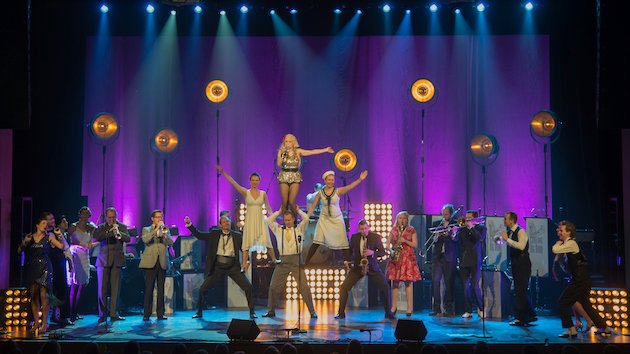
Indeed, Carling was raised on stage, performing in a family band throughout her childhood with trumpet-playing father, her mother on violin and banjo, her brother Max on violin, clarinet, and tenor saxophone, sister Gerd on piano, alto saxophone, trombone and vibes, and brother Ulf on drums, trumpet and vocals. The Carling family seemed to nurture overachievers.
Gunhild was the brightest star in a glittering Carling constellation, and in the decade before she moved to the South Bay became a ubiquitous presence on Swedish television, performing at national music festivals and providing expert commentary on the band showcase Dansbandskampen. In 2014 she placed third in the celebrity competition Let’s Dance on TV4, and has performed several times at the Royal Palace in Stockholm celebrating milestones for King Carl XVI Gustaf.
She arrived in the Bay Area with considerably less fanfare, but her timing might be auspicious. The region was ground zero for the trad jazz revival in the 1940s, a movement that peaked the following decade but maintained a foothold on the Bay Area music scene until a few years ago. The death of trombonist/bandleader Mal Sharp in March pretty much closed the book on the old scene (though vocalist Barbara Dane, reed player, historian and disc jockey Richard Hadlock, and trumpeter Leon Oakley are still with us).
Hot Club style bands inspired by the 1930s sound of Django Reinhard and Stephane Grappelli continue to thrive here. With a standard bearer as talented and charismatic as Carling, trad jazz might just lead the way into the roaring ’20s. Carling wouldn’t be surprised, but whatever happens, she’s trusting in the power of the music.
When live gigs return, she’ll be looking to perform more around the region, “but there’s no way to predict things,” she said. “One year ago, I didn’t know anything. We had no idea there’d be this pandemic. I never know what’s around the corner. I didn’t know six years ago I’d play for the king on his birthday. Or that I’d do Dancing With the Stars. But I do think we will survive this and that jazz is the highest level of art. It’s like the biggest invention of the 20th century, together with the airplane. There’s the Moon landing and jazz music.”



